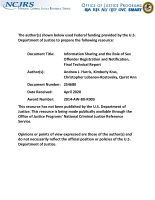Development, Reliability, and Validity of an Inventory for the Multidimensional Assessment of Sex and Aggression
Journal
Date Published
1994
Agencies
NIJ-Sponsored
Publication Type
Measurement/Evaluation Device




